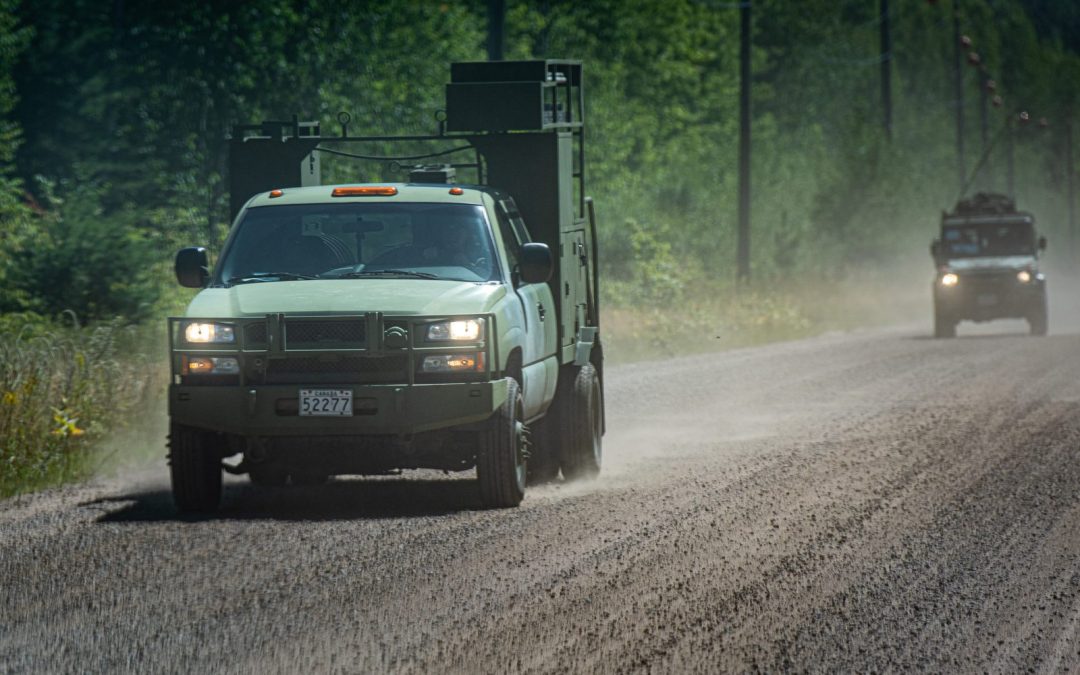The future of transportation might be electric, but it’s doubtful the Army’s next tactical vehicles will be — at least initially. The project directors for light utility and off-road vehicles both acknowledge the attraction of electric or hybrid platforms, but they contend the technology has not reached the stage to support around-the-clock operations and coalition interoperability.
The Light Utility Vehicle (LUV) project, however, represents an opportunity to experiment. The project will replace the Army’s fleets of Mercedes G-Wagon and Chevy Silverado jeeps and trucks with around 1,500 to 1,850 militarized vehicles and as many as 400 commercial style trucks.
The requirements for the militarized platform will include an internal combustion engine. But the project team has said it will look closely at electric and hybrid options for the 400 commercial trucks. Since these vehicles are used primarily on bases, on ranges, and by Reserve units, they are less likely — hopefully — to run 24/7 and require maintenance in the field.
So, would it make sense to capitalize on where the industry is heading and go green?
As one of the incumbents on the project, GM Defense will propose a militarized platform, with an internal combustion engine, based on the highly successful Silverado. But it will also provide a pathway to an electric future.
“Our goal is to make sure we architect in a path for more electric, more autonomous, and more connected capability,” said Steve DuMont, president of GM Defense.
When the company was awarded the U.S. Army’s infantry squad vehicle (ISV) contract in 2020, based on the Chevrolet Colorado ZR2, it also developed an all-electric prototype of the ISV to showcase its Ultium battery technology. It has taken the vehicle on tour to give soldiers an electric experience.
The LUV project is primarily about delivering a platform to support command and reconnaissance elements on operations, but “it has a lot of hooks in the language around it” to consider electric battery or other fuel cell technology, DuMont noted.
“Canada wants to lean forward and develop a very advanced capability. And it wants to do it leveraging significant commercial investments in this space,” he said. “Just like we did with the U.S. Army, we want to take that larger platform … and build it into a great vehicle for Canada’s defence needs.”
The Army’s Silverado was originally acquired in 2001 to replace the Bombardier-built Iltis jeeps used on bases and by specialized units, while the G-Wagon was acquired in 2003 to replace the Iltis on operations. The LUV project is seeking, ideally, a common chassis in two variants, with weapon mounts, and the ability to up-armour.
Since he became president of GM Defense in the spring of 2021, DuMont has spent a fair bit of time studying how to take the commercial technology that is underpinning the company’s transformation to electric, autonomous and connected vehicles, and “adapt it in a smart way to meet our government and defence customer needs,” he said. “How do we make this transformation in a smart way to harness those tactical benefits?”
As a former attack helicopter pilot used to targeting platforms using their heat signature, he noted the obvious tactical advantage of a vehicle without a hot engine or hot exhaust, and one that can ingress into a tactical situation with a quiet motor.
Military missions represent a more challenging environment than what the average GM customer needs, but there will be a strong push to move the military in a “green” direction, because the supply chain behind the platforms is also moving that way.
“This is a stepped transition to a more electric future,” DuMont suggested.
GM Defense aims to be a “mobility capability disruptor,” introducing and continuously refreshing technology in a manner that is much faster than current procurement systems allow. “Our whole mindset is to go fast…[and] do it in a way that doesn’t require defence departments to invest their own money in the development of technology, but rather leverage commercial investment,” he explained. For example, “I see autonomy as a great technology that GM is pioneering in commercial space [that can be adapted] to operate in a more austere environment.”
In that vein, GM has joined Lockheed Martin to design the next lunar mobility vehicle for NASA’s Artemis program, a two-seat rover that is fully electric and has autonomous drive capability.
Autonomous pickup trucks might be a step beyond what the Army needs today, but the LUV project is an example of how a commercial platform can be “adaptively engineered” to prepare for the technology of tomorrow.





Trackbacks/Pingbacks